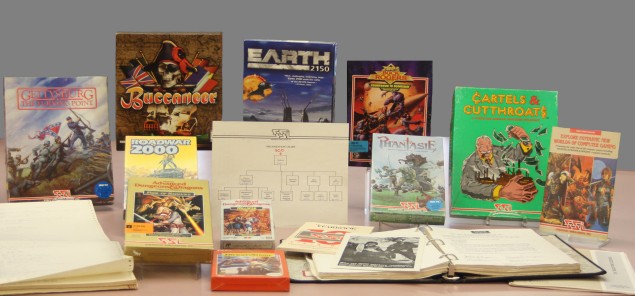Curators speak about their collections
[ Comments are closed for this post ]
The curation of videogames, their collection and preservation creates new challenges for the Museum. In 2002, Stanford curator of History of Science and Technology and Film and Media collections Henry Lowood called for new institutional and curatorial models capable of addressing videogames. Yet in a 2011 survey on the state of Digital Preservation, authored by Barwick et al reflected that most heritage institutions remain locked into a traditional object based understanding of collecting, and still do not have policies capable of supporting digital artefacts. There are however a number of organisations dedicated to collecting videogames and although they share a purpose in ensuring the preservation of these significant cultural artefacts their curatorial agendas are not identical but reflect the overall philosophies of the institution.
When an Art Museum collects a game it says something different about the work than when a Science Museum collects it. The Computer History Museum views its games history through a different lens than that of a Museum of Play or Childhood. An American Centre for the Moving Image has a different cultural focus than an Australian Centre for the Moving Image. Collections can be built around a variety of categories including: locality, platforms, designers, eras and genre. Frequently they are built around collections that are donated or acquired by the institutions.
Showcased here are a series of links to some reflections on their collections by a number of curators who are engaged in the collection and preseveration of videogames.
American Museum of the Moving Image, New York
The American Museum of the Moving Image had its first exhibition Hot Circuits in 1989 a year after opened. For Director Rochelle Slovin the exhibition posed the question “what exactly do videogames tell us about the moving image?” The forty-nine arcade machines collected for the exhibition form the basis of the museums now substantial games collection.
Strong National Museum of Play, Rochester, New York
John Paul Dyson is the Director of the International Centre for the History of Electronic Games (ICHEG ) at the Strong National Museum of Play in Rochester, NY, USA. ICHEG hold a significant collection of videogames including 140 arcade cabinets, 12,000 console videogames, all major home console produced since 1972 and over 200 different handheld electronic game systems. Dyson also works tirelessly to collect the archives of American game designers. He sees the collection as a natural extension of the Strong’s Museums existing toy, doll and game collection which focused on the history of how people play recognising that videogames were having a bigger impact on play than anything else. But he see ICHEG’s mission as bigger than just play:
J.P.Dyson: “ICHEG’s mission is to explore and preserve the history of video games and their impact in the world, and the way people play but also the way they live, the way they learn, and the way they relate to one another.”
[Image: Strategic Simulations Inc Archive donated to ICHEG by Joel Billings]
Museum of Modern Art, New York
Paola Antonelli curator of the Architecture and Deign Collection at MoMA in her Ted Talk on MOMA’s decision to collect games offers a witty and smartly articulated argument for collecting games as works of interactive design. She discusses the process that the MoMA took in making their selection outlining the interactive design traits that they have privileged in their selection and how they sit within the overall vision of MoMA.
Berlin Computerspiele Museum
This is a very New York focused blog! In contrast to wealth and prestige of an institution such as MoMA the Berlin Computerspiele Museum is new kind of institution it evolved out of recognition of the need to preserve videogames when it was an activity that very few institutions were engaged in.
Director Andreas Lange consider that as one of the oldest born digital artefacts games are important cultural artefacts that help us understand our relationship with technology. Founded in 1997 the Computerspeile Museum is an independent project that had to work to attract funding. Since 1997 it has curated thirty exhibitions and developed a collection of over 22,000 games, all major games hardware collection and an archive of over 10,000 game magazines.


